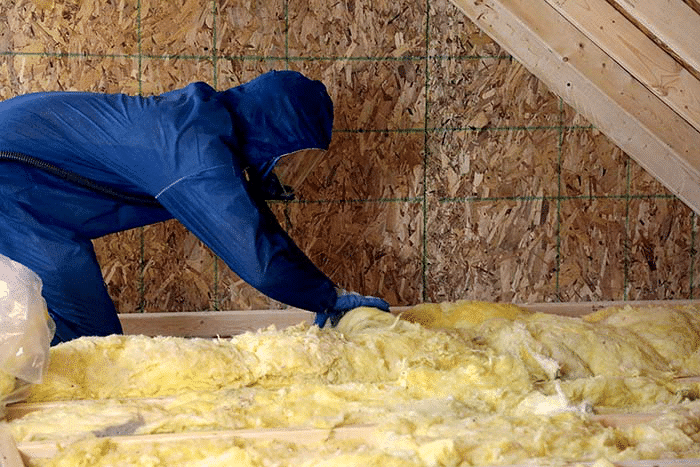Attic Insulation Problems: Top 5 Things to Watch Out For


Is it hard to maintain an even temperature in your home, and monthly energy bills are through the roof?
More times than not, issues with your attic insulation is the culprit.
Inadequate or poor insulation material in your attic can cause several problems, not just the two listed above. From mold growth to pest invasions, having fiberglass, cellulose, or no insulation can lead to many issues.
RetroFoam of Michigan has more than 17 years of experience insulating thousands of attics across the lower peninsula with foam insulation. We have seen dozens of issues and provided the solutions to the attic insulation problems homeowners experience.
Enough about us, here is a look at the top five attic insulation problems and how to fix them.
Attic Insulation Problems

Mildew and Mold in Attic Insulation
Mold is one of the more common issues found in attic insulation.
If the home doesn’t have an adequate vapor barrier and there are leaks, then that water absorbs into traditional forms of insulation like fiberglass and cellulose. The mold and mildew begin to grow, which can be a health hazard for everyone in the home, including pets.
Solution: Ninety-nine percent of moisture moves through airflow, so most mold issues can be prevented by adding an air seal to the attic.
The air seal can be added in addition to cellulose or fiberglass insulation or by using spray foam, which acts as both an insulator and air seal.
Pests in Attic
Did you hear that scratching? Maybe you heard little squeaks?
There could be a number of pests nesting in your fiberglass or cellulose insulation, and you wouldn’t immediately know it.
Because the attic is dark and not usually inhabited by humans, rats, mice, squirrels, and bats, just to name a few, can easily make your insulation their home, or it could serve as a food source. If you find any signs that rodents or pests live in your home without paying rent, you should call a pest control company as soon as possible.
Solution: Keep pests out of your attic and make it a less attractive space for them to want to make their nests.
You can do this by surveying the outside of your home and blocking or closing up any entry points the critters may be using. Also, check to make sure your insulation isn’t acting as a food source, as some insulation materials are more appealing to pests than others.
Old Attic Insulation Has Shifted and Settled
There are several reasons your traditional insulation isn’t performing as well as it could – usually drifting, and uneven distribution is the cause.
Over time blown-in fiberglass and cellulose can drift or settle, leaving your attic insulation with a lower R-Value and prone to air movement, which will contribute to high energy bills and an uncomfortable home. When insulation is improperly installed, it isn’t evenly distributed, which can also lead to air movement.
Solution: Blown-in cellulose and fiberglass must be regularly maintained by either adding more insulation or raking the insulation already in the attic.
You could opt to use a different insulation material like spray foam because it doesn’t settle or lose its shape over time.
Blocked Attic Vents Impeding Proper Airflow
With traditional insulation, it is important to keep the attic well vented.
If those vents leading out of your attic become blocked, then there isn’t proper airflow, which means your attic insulation will come into contact with moisture leading to mildew and mold growth.
Solution: It is crucial when using cellulose and fiberglass in the attic that when it is maintained, you ensure the materials aren’t blocking the vents.
Another option is insulating the roof deck with spray foam insulation, as this method eliminates the need for ventilation in the attic.
Ice Dam on the Roof
If the snow on your roof in the winter is causing the formation of ice dams, then there is a problem with your attic insulation.
Ice dams and icicles are formed when the snow melts and runs down your roof, refreezing near the edge. This only happens when part of the roof warms above 32 degrees. This is warm enough to melt the snow, but the roof edge remains below freezing.
Ice dams can be a bigger headache than you might think, as they can damage the roof. This means more money spent by you to fix not only your attic insulation but also your roof.
Solution: There are a couple of fixes to the ice dam problem.
You could add more insulation to your attic floor, thus keeping the temperature the same.
Ventilation can also help ease the problem. A ridge vent paired with continuous soffit vents will circulate the cold air throughout the attic. Place baffles at the eaves to maintain a clear path for the airflow from the soffit vents, according to This Old House.
Using a snow rake will help with roof ice dam prevention, and prevent stress, leaks, and cave-ins.
Finally, another option is to insulate the roof deck with spray foam. This will create an air seal that keeps the cold air from circulating around the attic while maintaining a constant temperature.
The Answer to Fixing Your Attic Insulation Problems
The answers to your attic insulation problems can be as easy as understanding how different types of insulation work and what you need to look out for.
A better, long-term solution many homeowners have found to fix their attic insulation problems has been to remove the old attic insulation and replace it with spray foam insulation.
If you are interested in learning more about the benefits of foam insulation for your attic, check out our Learning Center.
Related Articles
What is the Best Attic Insulation?
Does Mold Remediation Need to Happen Before Spray Foam is Installed in the Attic?
About Amanda Ringler
Amanda previously has worked as a breaking news and crime reporter, TV news producer, and editor in Flint and Detroit. Throughout her career as a journalist, she has won several awards from The Society of Professional Journalists - Detroit Chapter and the Michigan Press Association. As part of the RetroFoam of Michigan family, Amanda uses her experience as a journalist to write content that will help educate homeowners on the benefits of foam insulation. When Amanda isn’t writing, she’s spending time with her husband and rescued huskies. She also loves knitting, making art, cooking, and hosting dinner and a movie night for friends and family.

.jpg)
